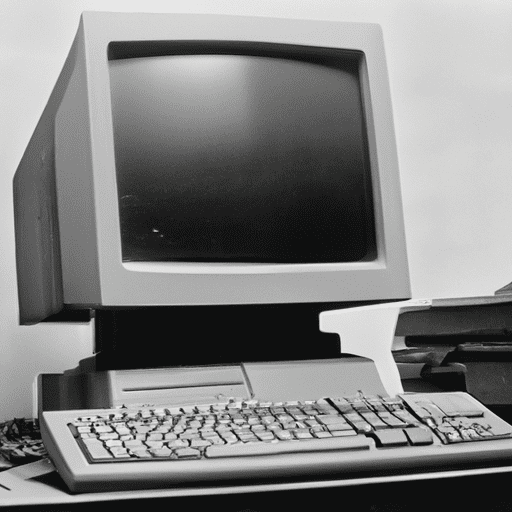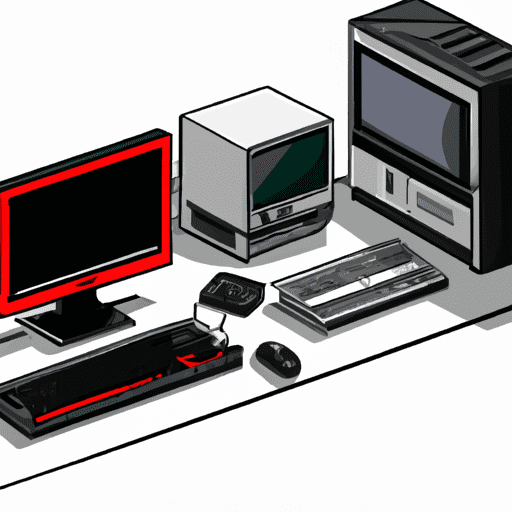This blog post delves into the birth of the personal computer and how it revolutionized technology in the 80s. We explore the key milestones, iconic figures, and groundbreaking companies that helped shape the digital world we live in today. From the invention of the first personal computer to the rise of giants like Apple and IBM, join us as we take a nostalgic trip back to the 80s.
'One small step for man, one giant leap for mankind' – The birth of the Personal Computer
The birth of the personal computer in the 1980s marked a monumental shift in the technological landscape, forever altering the way we live, work, and communicate. With the introduction of devices like the Apple II and IBM PC, individuals were suddenly empowered to harness the power of computing in their own homes. This era saw the democratization of technology, as the once-exclusive realm of mainframe computers became accessible to the masses. The personal computer revolution of the 80s laid the groundwork for the digital age we now inhabit, shaping the future of innovation and connectivity.

A black and white photo of the first personal computer, highlighting its bulky size and rudimentary design.
What's in a name? The rise of Apple and IBM
What's in a name? The rise of Apple and IBM:
In the 1980s, two iconic tech giants emerged as key players in the personal computer revolution: Apple and IBM. Apple, founded by Steve Jobs and Steve Wozniak in 1976, quickly made a name for itself with the release of the Apple II in 1977. This groundbreaking machine set the stage for Apple's future innovations, solidifying its reputation as a pioneer in the technology industry.
On the other hand, IBM, a long-standing powerhouse in the world of computing, entered the personal computer market with the launch of the IBM PC in 1981. With its reputation for reliability and performance, IBM quickly gained traction among business professionals and consumers same The competition between Apple and IBM during this era fueled innovation and pushed the boundaries of what was possible with personal computing technology.
How did the personal computer change our lives?
The personal computer revolution of the 1980s fundamentally transformed the way we live, work, and communicate. With the advent of these powerful machines, individuals gained unprecedented access to information and resources right at their fingertips. Tasks that once required hours of manual labor or extensive research could now be completed in a fraction of the time, thanks to the computational capabilities of personal computers.
The rise of personal computing also democratized access to technology, empowering people from all walks of life to engage with digital tools and platforms. From students conducting research to entrepreneurs launching businesses from their home offices, the personal computer became a catalyst for innovation and connectivity on a global scale. The ability to communicate instantly via email, connect with others through online forums, and access vast repositories of knowledge through the internet revolutionized the way we interact with the world around us.

A photo comparing a 1980s home office equipped with a personal computer to a modern home office, illustrating the dramatic transformation over the years.
Looking forward: The legacy of the 80s
The legacy of the 1980s in shaping the technology landscape reverberates to this day, with the innovations and advancements of that era laying the foundation for the digital age we now inhabit. As we look back on the birth of the personal computer and the technological revolution it sparked, we can see how the seeds planted in the 80s have blossomed into the interconnected world we live in today. The pioneering spirit of that decade, characterized by a relentless pursuit of progress and innovation, continues to inspire the next generation of tech visionaries and entrepreneurs.
From the sleek aesthetic design popularized by Apple to the user-friendly interfaces introduced by Microsoft, the influence of 80s technology giants can be seen in the devices and software we use daily. The legacy of the 80s extends beyond mere nostalgia, serving as a testament to the power of human ingenuity and the transformative potential of technology. As we move forward into an increasingly digital future, it is important to reflect on the lessons learned from the 1980s and the impact they continue to have on our lives. The legacy of the 80s serves as a reminder of the boundless possibilities that exist when we dare to dream, innovate, and push the boundaries of what is possible in the realm of technology.
The 80s marked a turning point in the history of technology, with the birth of the personal computer paving the way for the digital revolution. The changes that took place during this decade set the foundation for the technology that we use today. It was an era of innovation and creativity, pushing boundaries and redefining what was possible. The personal computer has come a long way since those early days, but its impact on society remains as profound as ever.

